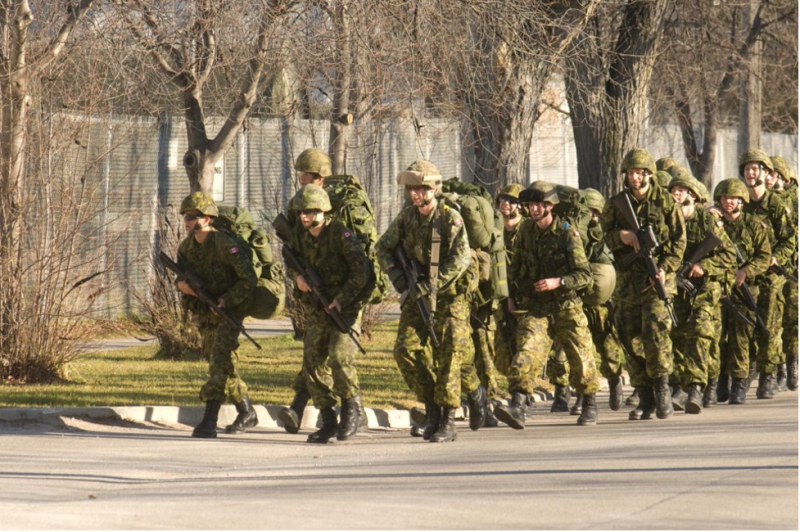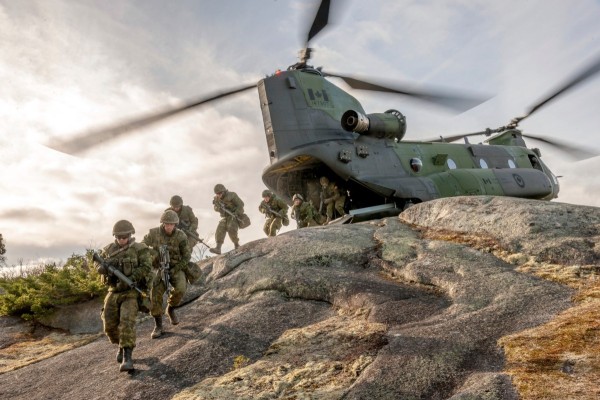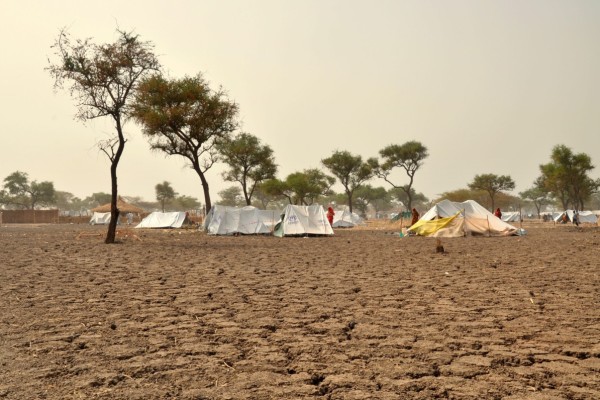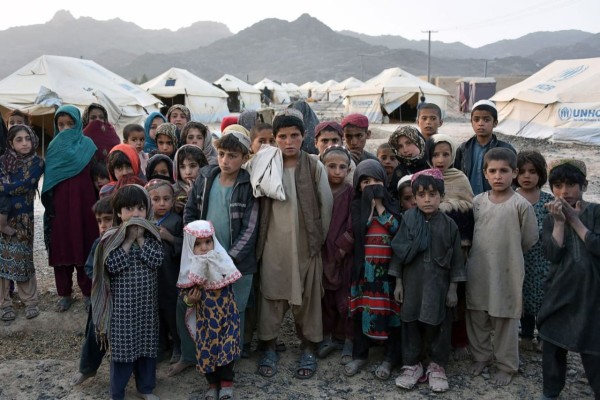Canada’s latest defence daydream
A proposal to conscript public servants into the reserves lays bare the confusion driving Canada’s defence bureaucracy

Army reservists during routine training. Photo courtesy Canadian Armed Forces.
Talk of war is in the air—at least among senior defence officials. Brigadier-General Brendan Cook, the Royal Canadian Air Force’s director general of air and space force development, has suggested that Canada could face a conflict with Russia or China within three to five years.
As revealed a few days ago by Ottawa Citizen defence correspondent David Pugliese, the Department of National Defence (DND) has come up with a plan. He reports that at the end of May, Chief of the Defence Staff General Jennie Carignan and Deputy Minister of National Defence Stefanie Beck issued a directive calling for a personnel increase of over 1000 percent in the armed forces reserves.
“Beck and Carignan pointed out that the plan would require a Whole of Society (or WoS) effort,” Pugliese writes, “meaning that all Canadians would have to contribute to the initiative. That would require the Privy Council Office to lead a government ‘approach to population engagement to advance servant culture around sovereignty and public accountability.’” In short, the government needs to mobilize the entirety of our society for war and imbue it with a new culture of patriotic service.
At present, the armed forces reserve consists of the primary reserve of about 25,000 troops, who turn out once a week and on occasional weekends for military training, and the supplementary reserve of about 4,500 people, which is little more than a list of retired service personnel who are willing to be called up to serve again in times of crisis. DND’s plan is to increase the ordinary reserve to about 100,000 and the supplementary reserve to a whopping 300,000.
Canadian military will rely on an army of public servants to boost its ranks by 300,000. Federal public servants would be trained to shoot guns, drive trucks and fly drones, according to a defence department directive.https://t.co/QxiyHmbO9M via @ottawacitizen
— David Pugliese (@davidpugliese) November 10, 2025
This runs into the immediate problem of finding the requisite number of people. The military has problems enough filling its ranks as it is. Quadrupling the ordinary reserve is going to be extremely difficult. Increasing the supplementary reserve from 4,000 to 300,000 is going to be even harder. Where are these people going to come from? Carignan and Beck have an answer: they will find them from among Canada’s public servants. Once enlisted in the supplementary reserve, these bureaucrats will do one week’s training a year (without being issued a uniform!), learning how to do things like shoot weapons, drive a truck, or fly a drone.
The scheme is frankly incredible. It seems improbable that that many public servants would voluntarily agree to join the military reserves. Beyond that, someone who has spent one week learning how to drive a truck is hardly going to be of much use fighting the Chinese or the Russians. It’s hard to see what value such poorly trained personnel would bring to the defence of Canada.
It seems that DND has in mind models such as Finland and Switzerland. Indeed, according to Pugliese, Finland is specifically referenced in the DND plan. But the Finnish and Swiss models are very different. In Finland, for instance, all young men are conscripted into the army, and spend six months to a year in the military depending upon their branch of service. Thereafter, they enter the reserves and do regular refresher training until the age of 60. In Switzerland, all young men do three to 12 months military service, followed by nine years in the reserves. Both models are far removed from the idea of rounding up a bunch of civil servants and spending a week teaching them how to shoot.
If the aim is truly to mobilize Canadian society for war, the policy would have to involve something much more substantial. The fact that the government is not proposing to do more suggests that deep down it doesn’t actually believe the talk of imminent war. If it does, its priority ought to be urgent diplomacy with the Chinese and Russians to prevent it. But one sees absolutely no indication of such diplomacy being undertaken. Instead, we have a seemingly pointless, but probably rather financially wasteful, scheme of half-hearted militarization.
Part of the problem here is that, as I have mentioned before, the boost that the current government has promised to the defence sector is not based on any solid strategic plan. Defence spending is meant to increase to five percent of GDP, but nobody seems to know what this money will be spent on and to what purpose. It’s a recipe for enormous waste, and practically guaranteed to produce ill-conceived policies dreamt up to exploit the moment and advance DND’s bureaucratic interests.
Fortunately, it would appear that the new mobilization plan may not see the light of day. Yesterday, Pugliese issued an update, writing that “following significant pushback from the public after the Citizen revealed the plan, [Chief of the Defence Staff General] Carignan appears to be having second thoughts.”
The thing is, though, that there should never have been first thoughts of this type at all. The fact that our two most senior defence officials signed off on the plan is a little disturbing. One also has to wonder whether the minister of defence was informed, and if so, why they didn’t spot the likely political backlash and veto it. As the government pumps more money into the military system, it will need a very firm hand to keep that system under control and to ensure that resources are spent in an efficient and productive manner. The omens, however, are not particularly good.
Paul Robinson is a professor in the Graduate School of Public and International Affairs at the University of Ottawa and a Senior Fellow at the Institute for Peace and Diplomacy. He is the author of numerous works on Russian and Soviet history, including Russian Conservatism, published by Northern Illinois University Press in 2019.










